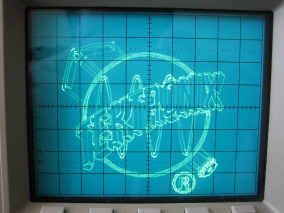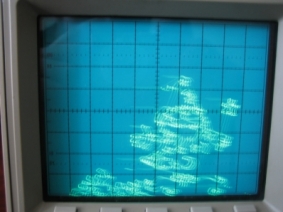Tektronix 2221A oscilloscope
The Tektronix 2221A is a 2 channel analog/digital oscilloscope introduced in 1991. It is a sister model of the 2220 and 2230. The 2221 has 60 MHz bandwidth and 20 MS/sec sample rate. The 2221A is an updated version offering 100 MHz and 100 MS/sec. The scope has 4k sample memory overal. The 2221A is one of the rare scopes were a switch allows to switch operation between pure analog (non-storage) and storage mode. I bought my unit for about 60 USD on E-Bay. I was able to get this unit especially cheap, because parts of the case are missing. But I also had luck: when I tried the scope for the first time everything was operational.


Focus problem
Unfortunately after only a short time the scope developed some issues with the focus of the CRT. The picture was blurred and the focus potentiometer did not improve things anymore. A first look into the internet about my problem revealed quickly that this is a well known problem with this scope family. Root cause are some resistors inside the scope which help to set the voltage for focus, but the selected resistors ratings are slightly marginal for the voltage levels (each resistor sees over 300V drop) and power dissipation the see. Because of this the resistors age, and their resistance gets slowly higher over time. At the end the generated focus voltage is wrong, and the picture of the CRT stays blurry. Only solution was to replace this resistors.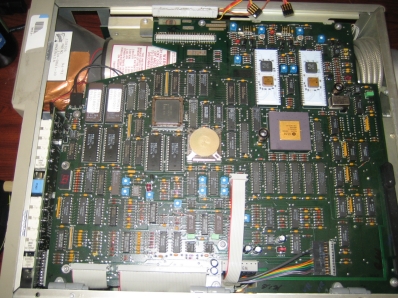

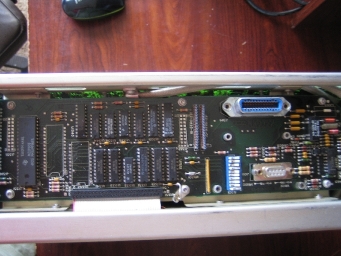
The inside construction of this scope is very nicely done. The scope consists of multiple boards. The top board is called the storage board, and it mainly consists of the parts needed for the digital storage mode of the scope. This board can then be flipped upwards and below the main board consisting of the power supply and control circuits for the analog mode can be found. The broken resistors for the focus are contained in the shielded power supply section of the scope.

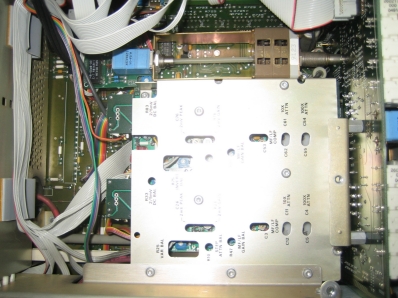
One word of warning: This shielded power supply section contains a switching power supply charged to mains voltage and the high voltage generation circuitry for the CRT. The voltages present in this section and in general in a CRT based scope are lethal! Only open a scope like this if you really know what you are doing. You only do it on your own risk!
After I have opened the power supply section of the scope I measured all the resistors which could be the culprint. I got the following measurement results:
R886 = 176.6 k measured (nominal 180k)
R888 = 512k measured (nominal 510k)
R889 = open (nominal 510k)
R890 = 566k (nominal 510k)
R891 = 572k (nominal 510k)
R892 = 5.95 Mohms measured (pot?, therefore R892 open), (nominal 510k)
R894 = 523k measured (nominal 510k)
R893 = pot endpoints = 5.95 Mohms measured (nominal 5 Mohms)
This was the verification that in fact my focus resistors broke over time.
I replaced all resistors in the focus circuit with newly ordered HVR37 resistors. This resistors are higher rated than the original ones, and therefore I hope that this resistors will never break again. Only drawback of this replacement resistors is that this units are bigger than the original ones. Therefore it was a little bit more difficult to fit the parts, but it worked out. The picture below shows the newly installed resistors. After the repair was done the focus and the scope worked again.


Easter egg
My Tek2221A scope has the same funny easter egg built in as a Tek2232 scope. The hidden menue is reached by pushing the "ADC FUNC" button once. Afterwards push the "SAVE REF.3" button two times. Now move the "CURSOR". After the cursor is moved the scope enters the hidden menue which is also shown below. This menue allows to show the old Tektronix logo, or it allows to view the animation of a wizard which moves over the screen. Last but not least this menue allows to erase all memory of the scope.
